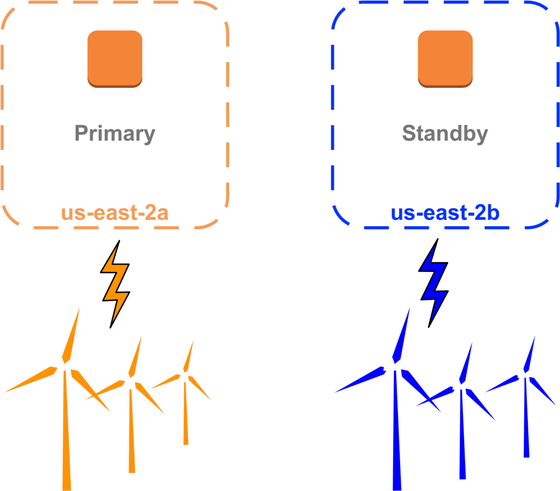The idea of "zone" that has increased the availability of AWS and supported growth

Amazon Web Service(AWS) is a generic term for cloud computing services offered by Amazon.com, which is one of the services providing a scalable virtual server "Amazon Elastic Compute Cloud (EC 2)"is. The service started in 2006, but it was introduced that "Zone" which is a major feature that enhances availabilityMarch 26, 2008So, in commemoration of the tenth anniversary of the introduction of the zone, the chief technology officer at Amazon.comWarner VogelsIs posting a blog about the zone.
Looking back at 10 years of compartmentalization at AWS - All Things Distributed
https://www.allthingsdistributed.com/2018/03/ten-years-of-aws-compartimentalization.html
The AWS cloud uses a virtual server in the form of "instance" when it is used, but of course the real servers that are actually located in the data center are running behind it. Each data center has redundant power supplies such as UPS and generator, and it has redundancy in the network design, but there is still the possibility of disruption.
"Zone" is, in short, a different data center, which means that different zones mean that it does not share elements such as power, core network, or even buildings. Because it is completely separated, by keeping instances in different zones, you can continue to provide services even if a zone becomes unusable.

In addition, AWS service designs various services so that it can be completed within the zone as much as possible. There is a reason for securing redundancy, but this is secondarily creating the effect of quick access to services in the zone. For example, if you send a packet to the EC2 instance in the same zone, the time required to reach it is less than 0.05 ms. Also, since the same system is placed in multiple zones, rough skill called "delete one entire zone" is also possible in emergency without specifying the problem part.

Also, when AWS's service entered another area, it was initially considered to be designed as a seamless global network. For exampleAmazon Simple Storage ServiceIn the case of (S3), it was considered to design to operate as one large S3 synchronized all over the world. However, since this design expands the error between the regions, there is a possibility that a large-scale failure may occur, and since I realized the merit of "Zone", I decided to separate the region after all And that.

In 2018, 10 years after introducing the zone, 18 regions and 54 zones are running on AWS. More than 12 new regions are planned, and Vogels has concluded that he wishes to further extend the concept of zone to make it more effective.
Related Posts:
in Web Service, Posted by log1d_ts







